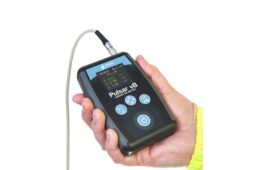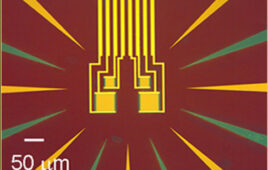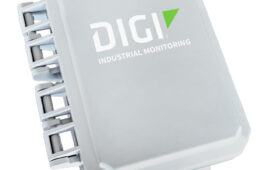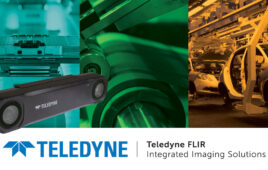Basic position sensing concepts take on added importance for precision applications as new issues must be considered.
By Andrew Waugh, AutomationDirect
Industrial automation solutions commonly rely on position sensing to confirm that parts and equipment are in the proper place. Standard applications can include sensing if a box is present on a conveyor or if a door is closed. The most basic products for this purpose are limit switches and proximity switches respectively, and both are excellent options in many cases.
For many industries, though, standard isn’t nearly good enough. In certain machining applications, it may be necessary to achieve repeatable position sensing accuracy measured in hundredths of a millimeter or better. This is because high-tech manufacturing often calls for high precision position sensing.

Figure 1. Standard mechanical NEMA limit switches, like this Eaton version, offer good repeatability for their size. All figures courtesy of AutomationDirect.
Designers tasked with selecting high precision sensors will use many of the same concepts applicable to standard sensors, although taken to a much more rigorous level. Also, high precision sensors introduce some additional considerations which must be addressed. This article examines some of the available high precision sensing solutions, and then shows how designers can successfully apply these solutions to meet the requirements of demanding applications.
How good is good?
Whether sensing a linear or angular position, repeatability is the name of the game in determining position switch accuracy. A small repeatability tolerance means the switch will respond the same every time when it is triggered at a given position within the stated repeatability range.
Standard limit switches, such as mechanical NEMA styles, may offer a repeat accuracy of 0.05mm or better, quite good for a larger switch, Figure 1. Typical non-contact proximity switches, on the other hand, have many benefits, but repeatable accuracy is not usually considered one of them.
Users looking for precision limit sensing often require a repeat accuracy of 0.0005 mm, which is 100 times better than standard switches may offer. Some precision limit switches have such good repeatability that they may be used to calibrate other machines.
This exceptional accuracy may be needed at just one sensing location. Even more critical is if there are a series of related sensing locations where insufficient repeat accuracy can have a compounding effect, resulting in an unacceptably poor tolerance. Choosing precision sensors ensures the best possible signal is being provided and can help prevent potential tolerance issues.
Precision sensing situations
By their very nature, precision sensing applications tend to be on the specialized end of the spectrum. Sometimes designers are using precision sensors to replace manual testing or calibration steps that are costly or time consuming.
Consider any type of machining or milling equipment where the cutting tool is subject to wear. One way to detect this is to program the equipment to accurately position the cutting tool at a test position before or after it performs its typical task.
The test location is often near the home position of such equipment to make this step quick, and the location is equipped with a carefully mounted precision position switch. As the cutting tool starts to wear over time, eventually this test step will not trigger the switch, and the operators will be alerted to inspect or replace the cutting tool.
Another situation demanding high precision switches is for parts assembly equipment. These machines sequentially step through operations of placing and fastening components, so it is necessary to detect that components have been seated properly in position before the machine proceeds to the next step. For delicate assemblies with fine components, the small distances involved require precision sensing to properly detect position.

Figure 2. Precision limit switches can be accurate enough to evaluate the wear on cutting tools with a 0.5 micron (0.00005mm) repeat accuracy and are available in various configurations such as these Metrol designs.
Making the right touch
Physical limit switches, whether standard or precision type, are often the best solution for obtaining tight and repeatable accuracy at a relatively low cost, Figure 2. However, their main disadvantage is that they are 100% dependent on physically touching the object through motion. The motion may be as a part is moved into position where a sensor is mounted in a fixture, or the sensor could be on the end of a movable element like a robot arm. Over time, this can cause issues.
Mechanical wear after many operations is a concern, whether on the contact portion of the sensor or the internal mechanism, especially because precision sensors are often designed with somewhat smaller and less robust housings than standard sensors. Since motion is involved, impact or overtravel damage is a risk. Basically, physical limit switches are a part that will inevitably need to be adjusted, and eventually replaced.
Another concern for some applications is that physically touching a part may not be acceptable due to safety, temperature, or sanitary reasons. In this case, a non-contact solution must be explored.
Non-contact precision sensing
Numerous non-contact sensing technologies, such as opto-electric photoeyes or ultrasonic sensors, excel at simply detecting the presence of something without actually touching it. However, these common sensing types have nowhere near the repeatable accuracy of the previously discussed physical limit switches.
For high precision non-contact sensing, laser light sensors provide the best possible performance. These devices can be mounted some distance away from the sensed part, avoiding contact with the part and also the environmental conditions. The major characteristics for any laser sensor are sensing range, resolution, and cost. Not all laser sensors are equal, and many of their specifications including repeatable accuracy can vary substantially from one model and style to another.
Some styles of laser sensors just monitor the amount of light reflection, while other more advanced versions use triangulation or time-of-flight calculations for determining position. Regardless of the technology, performance is often quantified in the cost.
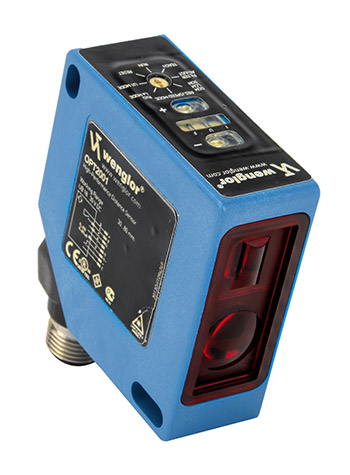
Figure 3. Laser sensors are a suitable high precision non-contact measuring method for many applications, and devices like this Wenglor sensor, which can resolve to 0.008 mm.
Basic laser sensors that cost about $300 provide 1-mm resolution with a detection range of 0 m to 3 m. For double that price, a sensor can deliver resolution better than 0.05 mm, although at a reduced range of 50 mm to 350 mm. For the same cost of $600, a sensor can offer an even better resolution of 0.008 mm, as long as a reduced range of 30 mm to 80 mm is acceptable.
This is not the end of the line for laser sensor performance. For thousands of dollars, a laser sensor can have a resolution of 0.00122 mm throughout a range of 200 mm to 1000 mm, or even 0.00006 mm with a small sensing window of 20 mm to 24mm. In addition to the cost, these more advanced units require special programming and communication interfaces to fully capture the available data. However, for the most demanding applications, the technology is available.
All in the details
For precision sensing, there are four major areas of specifications to be considered:
• Performance
• Target
• Environment, and
• Interface
Regarding performance, this article has already discussed resolution, repeatability, and minimum/maximum range. Another detail is response speed, or how quickly the sensor transmits the value to a supervisory control system. Because the positions are usually sensed as the target or the sensor is in motion, the speed at which the sensor is providing the distance information must be known.
Target conditions play a role because the angle, reflectivity, and color of the target may affect the measurement, especially when a laser sensor is used. Environmental conditions can include temperatures, contaminants, and even vibrations. When such sensitive measurements are undertaken, it is crucial to protect the sensing device to the greatest extent possible as it could be susceptible to temperature drift. A robust mounting scheme is necessary because in some cases equipment vibration can exceed the resolution of the sensor.
A final matter regarding the interface: Sensors might only provide a switching on/off contact, or they may output a measuring 4-20mA analog signal, whether they are standard precision or high precision. More advanced sensors, especially laser sensors, may have a comprehensive local user interface for configuring and monitoring the device, and also take advantage of industrial communication protocols to transmit data.
Combining multiple sensors
Because laser sensors provide such good non-contact resolution, they are also an excellent choice for performing more advanced measurements. Several sensors can be used in conjunction to measure the length and height of a box, for instance, which can be used to determine the box size, or help the automation system position the box on a conveyor. Some models can coordinate with an encoder input to provide a z-dimension element, enabling a full three-dimensional sizing information to be calculated.
There are many industries and applications demanding better than standard sensing elements. Several styles of precision sensing devices are available to meet these needs. Selecting the right precision sensing solution involves the same general considerations as for standard devices, but due to the delicate nature of the measurements involved, it is necessary to delve more deeply into the details.
Filed Under: Sensors (proximity), SENSORS

